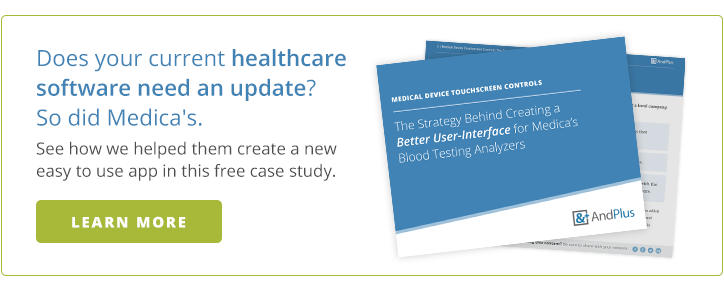The move to EHRs was designed to improve the safety, quality and efficiency of patient care. While some hospitals and physicians’ offices have successfully implemented hospital information system software, many more are struggling.
The Health Information Technology for Economic and Clinical Health Act (HITECH Act), created in 2009, created a mandate that hospitals and doctors’ offices adopt EHRs by 2018 or face penalties.
They offered incentives for healthcare organizations that could meet “meaningful use” guidelines from 2011-2015. After that, healthcare systems and physicians who didn’t use EHRs or couldn’t show that they met Meaningful Use standards would face penalties.
More than half of the doctors who bill Medicare are facing penalties of 1 percent of their 2015 payments because of a failure to comply with Meaningful Use, according to Dr. Steven J. Stack, president of the American Medical Association.
This legislation, combined with the Affordable Care Act, makes it critical that hospitals can access and analyze patient data, including population health data, healthcare costs and readmission rates.
Getting More Value From Your Hospital Information System Software
With healthcare systems spending hundreds of millions on EHR systems when they’re already looking at tight budgets, it’s crucial that healthcare providers reap all the benefits EHRs can offer. Here are five key ways to promote user adoption and get more value from your EHR:
Focus On Staff Training
While booking hours of training may seem like too much of a strain for busy healthcare providers, the time spent training users of EHRs pays off with better user adoption.
While some healthcare systems like Brigham and Women’s spent 12 hours learning to use their new EHR, some users were still not comfortable with the new software.
While it’s tempting to skimp on user training, it can lead to frustration and ultimately poor user adoption. It’s better for hospital and doctors’ offices to plan for plenty of training and user support so that everyone understands how to use the EHR and can get any problems or questions answered quickly.
Provide Feedback To Your Vendor
EHRs, like any software solution, are continually evolving. As EHR vendors evaluate what new features to add, they often look at user feedback. Taking the time to send feedback to your EHR rep can help guide the company toward adding new features or processes that will make users more effective and their software more valuable to new and existing customers.
Look For Efficiencies
Healthcare providers that are using EHRs are finding that it is streamlining some parts of patient care. Moving to a digital system can automate daily tasks like sending reminders for follow-up appointments and give patients the ability to schedule appointments online.
Using EHRs to communicate among care team members also saves time and makes collaboration easier and more efficient. Plus having all communications in one record eliminates confusion and makes it easier to confirm orders among the care team.
Centralized medical records can be accessed by any healthcare provider or hospital within the same system, reducing time spent tracking down records or entering duplicate information into another system - a win for both healthcare providers and patients. Checking a patient’s history or status is also easier through the centralized system.
While EHRs have slowed some aspects of patient care as doctors and nurses learn to use the digital systems, many healthcare leaders are hoping this is a case of short-term pain for long-term gain.
Once healthcare organizations start to realize the efficiencies EHRs can deliver, they expect to see an increase in time healthcare providers can spend with patients.
Calculate Your Savings
Healthcare organizations looking to improve their cost savings need to look at both the hard and soft costs that come with implementing EHRs.
Healthcare organizations can reduce hard costs by using a cloud-based EHR as a way to save money on installation fees and hardware.
Hospitals can calculate savings on soft costs by looking at areas of increased efficiency and the reduction of manual tasks, like entering patient data in multiple systems or having nurses call to confirm appointments. While a bit harder to track, these efficiencies all add up to greater savings for healthcare providers.
Invest In Customizations
After spending time on training, if healthcare providers still don’t feel like their EHR is aligned to their needs and isn’t delivering value, the healthcare organization should consider investing in specific customizations or apps to address providers’ concerns.
Whether it’s creating a mobile app to make patient data easier to access, search or record or creating an integration with other solutions, custom software can help organizations address these issues and reduce user frustration.
Creating these customizations in a flexible, agile manner means that they’ll be easier to modify as EHRs evolve and can be adapted as needed.
Successful EHRs Drive Better Patient Care
As EHRs continue to mature in healthcare organizations their value will be realized. With the right focus on training and customizations, hospitals should see improvements in the quality, safety and efficiency of patient care.
What types of training did your healthcare organization use when it implemented its EHR system? Has your healthcare organization made any customizations to its EHR? What areas of patient care have you seen improved by the use of EHRs? Tell us more in the comments below.

















